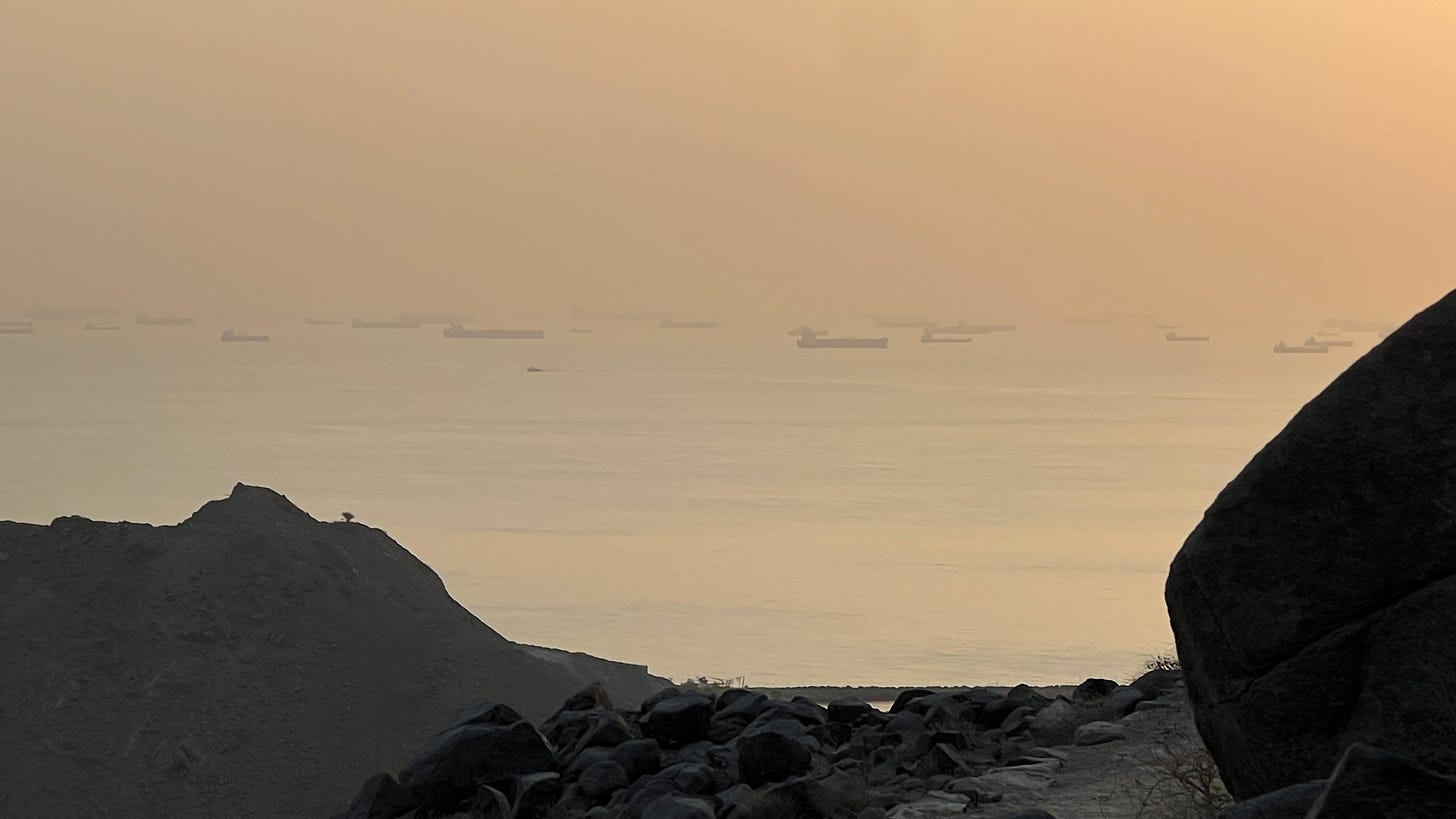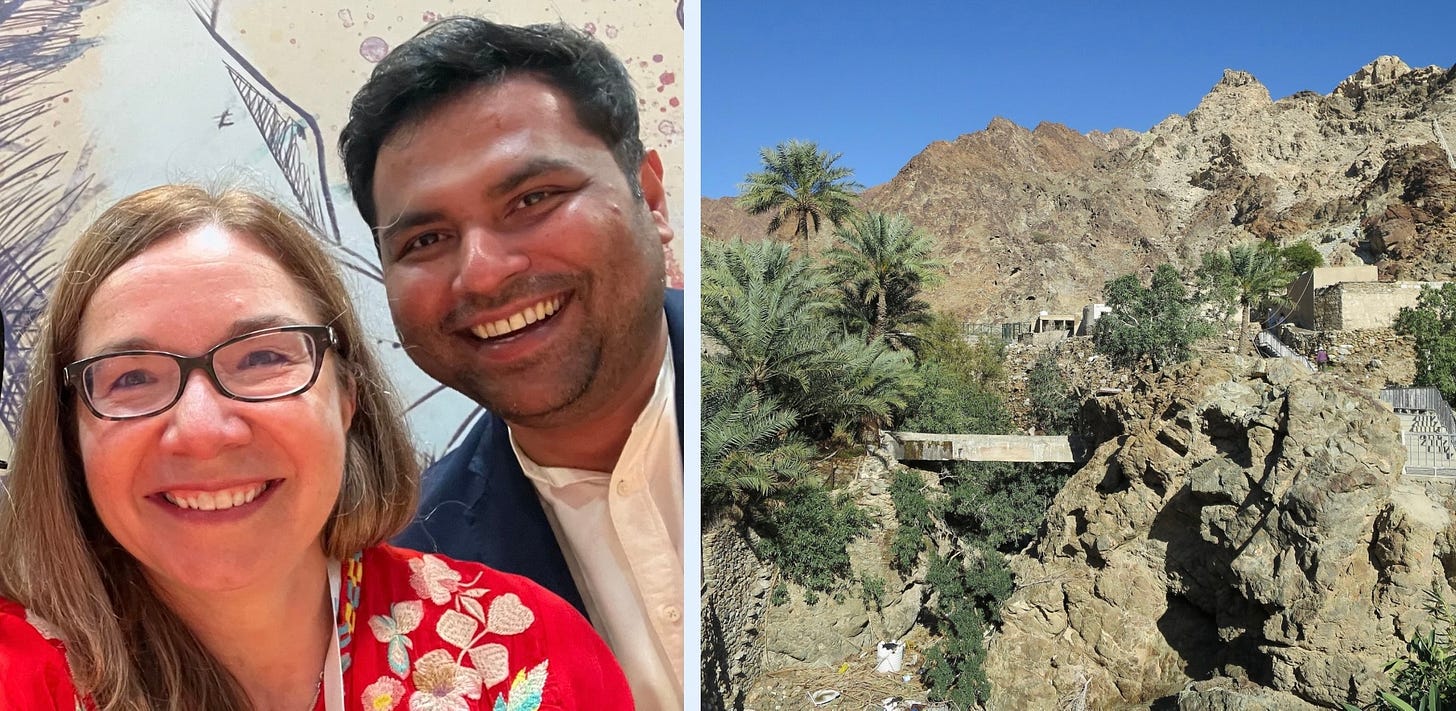From oil fields to mangroves
The UAE commits to renewable energy, the Middle East heats up, and the Arab youth movement for climate action
Last week, I was in the United Arab Emirates for the IUCN’s World Conservation Congress in Abu Dhabi, followed by the Global Future Council meeting in Dubai. The WCC is a global gathering held just once every four years that brings together thousands of people from around the world. Everyone there is working on solutions for nature, climate, and people that will help to build a more resilient future and a livable planet for us all. So you can imagine what an inspiring event it is!

While there, I had the chance to meet many interesting people, including the UAE’s environment minister Shaikha Salem Al Dhaheri, the first woman to earn a PhD in wildlife conservation, who told us that the UAE sustainability fishing index has increased from 9 percent to 97 percent in just six years; several of The Nature Conservancy’s Kenyan and Tanzanian partners working on sustainable grazing and wildlife migration; and the IUCN president, Razan Al Mubarak, who is from Abu Dhabi herself. I even got to see a new robotic vehicle that is automating mangrove planting - which I know first hand is back-breaking work!

The UAE has a 2050 net zero emission target, and has committed to tripling the amount of renewable energy used in the country by 2030. This past January, Masdar, a state-owned renewable energy company, announced it is building a 5-gigawatt solar plant with 19 gigawatt hours of storage capacity that will produce 1 gigawatt of uninterrupted renewable power when it is completed in 2027.
Earlier this year, the UAE also became the first country in the Middle East to require companies to monitor and report their greenhouse gas emissions. Both public and privately held companies must comply with the rules to track and shrink their emissions or face fines.
And adaptation is also occurring. As this BBC story on Old Dubai shows us, there are plenty of lessons to be learned from the past, before air conditioning, on how to keep cool, from thoughtful shade and airflow to green interior courtyards.
While at the IUCN Congress, I met Sheena Khan — from Toronto, like me, but now living in Dubai where she is the head of environmental programs for Terra, a science and sustainability centre in Dubai. They’re piloting a host of programs including engaging school children in restoring green and blue areas in the city (plants and water) and placing over a hundred beehives with native plants at schools throughout the area.
The petrostates of the Persian Gulf have the largest and most readily extractable oil and gas reserves on the planet. The UAE alone totals 4 percent of global production. While on an early Saturday morning hike, I was amazed (and depressed) to see an endless vista of oil tankers as far as the eye could see, stretching out to sea.
Tapping into these reserves has been the main driver of these economies for decades. And yet the Persian Gulf region is also one of the most vulnerable places to extreme heat on the planet. The hottest temperature ever recorded in the eastern hemisphere — 53C or 129F— was recorded in Kuwait in 2016, and the Arab world is warming at twice the rate as the rest of the planet. By the 2070s, the region could move “from one that’s merely inhospitable to one that is actually intolerable,” says atmospheric scientist Colin Raymond.
There is no question the world - including the Middle East - has to cut emissions sharply and reach net zero as soon as possible for people to be able to continue to live in this region year-round. “Further warming in one of the world’s hottest regions means that global decarbonization must be prioritized to maintain livability,” Jim Krane wrote in the 2024 Energy Insights Report. And heat isn’t the only risk: in 2024, Dubai experienced flooding after receiving its heaviest rainfall in 75 years, with five inches falling in one day.
”Gulf states like to be seen as world leaders on a range of issues, but on the critical global issue of heat protection, their record is lackluster at best,” said Michael Page, deputy Middle East director at Human Rights Watch. “As a result, migrant workers in countries like Saudi Arabia, the UAE, and Qatar who are trying to provide for their families back home are unnecessarily suffering every day, enduring long-term chronic illnesses, and even dying due to the suffocating heat.”
The best part of social media, for me, is the connections it creates. For example, I’ve followed Neeshad Shafi, executive director of the Arab Youth Climate Movement (AYCM), online for years, admiring his commitment to empowering youth across the region. So you can imagine my joy when, while walking through the IUCN Congress, there he was—with two of the young activists he’s mentoring!
AYCM Qatar focuses on grassroots education and hands-on experiences to develop sustainable communities in the Arab world. In 2023 they carried out a study on Qatari public perception of climate change, with the goal of gauging the average person’s understanding and awareness. Neeshad’s aim was to show that Qataris are “pro-climate people” and want their country to take proactive steps in reducing the impacts of climate change - just like the majority does in just about every country around the world.
While at the WCC, I also met a young engineer who was partnering with WWF to restore the fragile ecosystems in Wadi Shees. The UAE relies on the falaj system for fresh water, a series of wells and canals that funnels rainfall toward farms and communities. Project participants are working to keep that system sustainable as groundwater levels drop and demand continues to rise.
These experiences and conversations demonstrate how everyone from leaders to young people are driving change. They left me much more hopeful about the future of climate action in this region.








Amazing and inspiring! Thank you for this reporting.
That's rather encouraging news coming from an unexpected source. Thanks for the info!